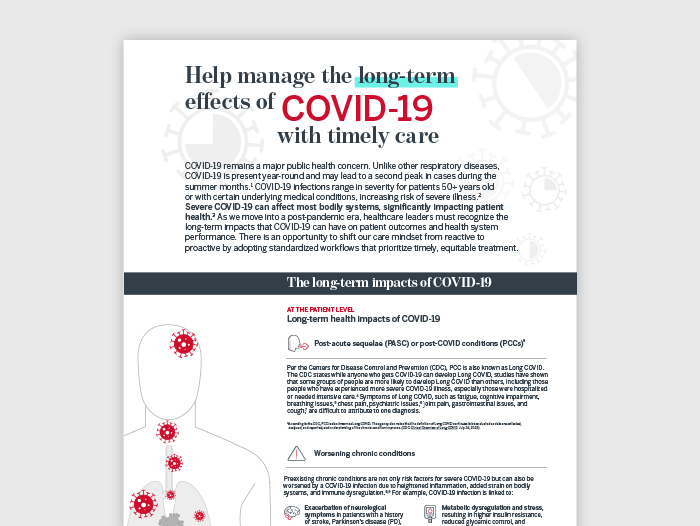Auto logout in seconds.
Continue LogoutPhysicians are expressing an unprecedented interest in unionization. Advisory Board's Colleen Wagner dives into why this shift to unionization is happening now, what's different about recent union activity, and what the future of physician unionization might look like.
At a time when organized labor unions are in the spotlight across all industries, it's not surprising to see healthcare unions in the headlines. But what is surprising is that physicians and advanced practice providers (APPs) have joined this movement.
We've covered the rise in physician burnout and intent to leave, but it has remained rare for this group to unionize. The uptick in interest signals an important shift — and reinforces the need for executives to double down on provider retention.
Why is this shift happening now?
The short answer: Higher rates of physician employment make unionization possible — and more attractive.
Historically, most physicians worked in private practice. However, a significant shift in employment trends has occurred over the past few years. Now, more physicians are working as employees of organizations instead of private practices — and rising tension between employers and physicians is driving increased interest in unionization.
Until recently, physicians largely viewed unionization efforts as taboo, according to Robert Wachter, professor and chair of the Department of Medicine at the University of California, San Francisco.
"Physicians had a lot of agency," Wachter said. "Even if you did work for a hospital, the hospital was very beholden to you. The general feeling was that we didn't need [unionization due to] the nature of the system and how it was organized and the importance of physicians in the system, as both clinical and economic drivers."
According to data from healthcare consulting firm Avalere, about 74% of doctors were employed by hospitals, health systems, or corporate entities as of January 2022 — a significant increase from 62.2% in January 2019.
Like other industries, doctors must be employees to unionize. As the number of physicians employed by a hospital or corporate entity continues to increase, unionization is becoming a viable option for far more physicians than in the past.
And many physicians aren't content with their current working arrangements. As healthcare workers increasingly experienced burnout and staffing challenges during the COVID-19 pandemic, union interest within hospitals started to gain more traction among all healthcare workers, including physicians.
In 2021, we saw a spike in the percent of physicians considering a career change. Building on momentum across other roles and industries, this simultaneous rise in both employment and discontent creates favorable conditions for physician unionization.
What's different about recent union activity?
The short answer: Compensation is only one part of the solution.
As with many organized labor unions, compensation is a large part of the conversation. Employees often cite being overworked and underpaid, but this movement also extends beyond monetary concerns.
In an American Medical Association issue brief, researchers cite burnout as a significant driver of physician unionization. "Physicians vigorously complain that they spend more time than ever on EHR documentation and bureaucratic administrivia," the brief stated, noting that these conditions may lead some physicians to believe that unionization will help better their working conditions.
This increased interest in union activity is particularly evident among the physicians and support staff at Allina Health. Earlier this month, a vote resulted in roughly 400 physicians and 150 nurse practitioners and physician assistants joining the Doctor's Council — a branch of the Service Employees International Union.
Two of the primary complaints from Allina Health physicians were understaffing and lack of communication from administration, which adversely affected the quality of patient care. On top of fair payment, clinicians want to have a voice in decision making and feel that they are empowered to deliver the highest quality patient care.
"With all the labor movement in the country, this is the right time, because the point is not just monetary," said Frances Quee, president of the Doctor's Council. "Patients are our responsibility, and doctors just want to have a say in how these patients are being taken care of."
To ultimately reach a consensus, the solution cannot be purely financial. Yes, organizations must be willing to negotiate — and renegotiate — fair payment contracts. But they also must be willing to examine the administrative burden placed on physicians, care team design, and care pathways to find creative solutions that support both their employees and their strategic goals.
It is more important than ever for employers to hone in on their physician employee value proposition and implement measures to proactively reduce burnout.
What does the future of physician unionization look like?
As we've discussed, the simultaneous rise in physician employment and discontent enabled the right conditions for unionization. Unless one of these two factors changes, we expect to see continued interest from physicians and APPs in joining organized labor unions.
Organizations who work with their employees to address the root causes of burnout and discontent head-on will win the race for physician talent. (Devereaux, Modern Healthcare, 10/20; Gooch, Becker's Hospital Review, 10/20)
Physician employers are facing a shifting physician workforce. The classic playbook for physician recruitment and retention is no longer enough. Read on for the three trends driving the changes and tips for what your organization can do to win long-term loyalty.
Don't miss out on the latest Advisory Board insights
Create your free account to access 1 resource, including the latest research and webinars.
Want access without creating an account?
You have 1 free members-only resource remaining this month.
1 free members-only resources remaining
1 free members-only resources remaining
You've reached your limit of free insights
Become a member to access all of Advisory Board's resources, events, and experts
Never miss out on the latest innovative health care content tailored to you.
Benefits include:
You've reached your limit of free insights
Become a member to access all of Advisory Board's resources, events, and experts
Never miss out on the latest innovative health care content tailored to you.
Benefits include:
This content is available through your Curated Research partnership with Advisory Board. Click on ‘view this resource’ to read the full piece
Email ask@advisory.com to learn more
Click on ‘Become a Member’ to learn about the benefits of a Full-Access partnership with Advisory Board
Never miss out on the latest innovative health care content tailored to you.
Benefits Include:
This is for members only. Learn more.
Click on ‘Become a Member’ to learn about the benefits of a Full-Access partnership with Advisory Board
Never miss out on the latest innovative health care content tailored to you.



